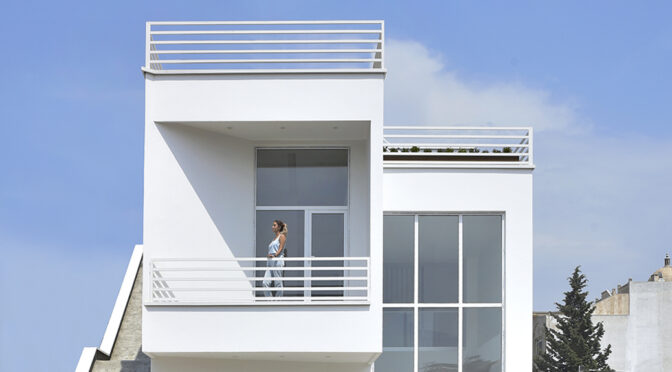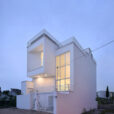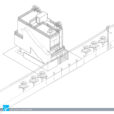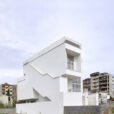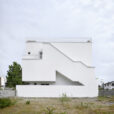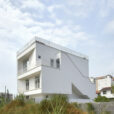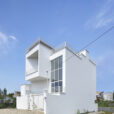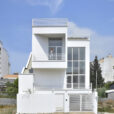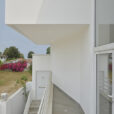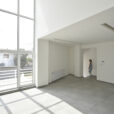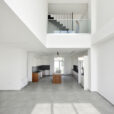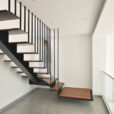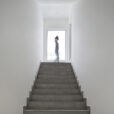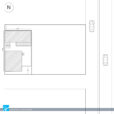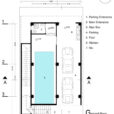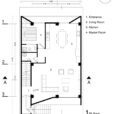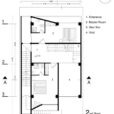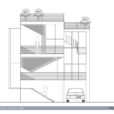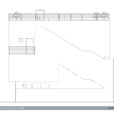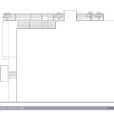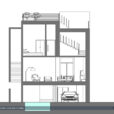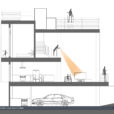ویلا ثلث
ژاژ استودیو (قاسم نوایی)
موقعیت: سرخرود، محمودآباد، مازندران، ایران
تاریخ: ۱۳۹۹
مساحت: ۲۸۰ مترمربع
وضعیت: ساختهشده
کارفرما: امید توکلی
همکاران طراحی: محمد شالیکار، حدیث پورابراهیم، عاطفه پاشایی
سازه: سیدمحیالدین طیبی
اجرا: محمدرضا مقدس نیاکی
عکس: استودیو دید
ویلا ثلث به دلیل واقعشدن در سایتی که به منظور توسعههای آتی، به سه قسمت تقسیم شده، به این نام نامگذاری شده است. با توجه به نزدیکی این سایت به دریا، و در نتیجه، سطح بالای آب در منطقه، حجم کلی ویلا بهواسطه پله از زمین جدا شد، و به دلیل عرض کم زمین، با ایجاد بیرونزدگی در حجم، امکان سایهاندازی بر سطوح بیرونی به وجود آمد. بهرهگیری از کوران در پاسخ به نیازهای اقلیمی منطقه، عامل مهم دیگری در طراحی پروژه بود که با استفاده از پنجرههای کرتینوال و تغییر ارتفاع فضاهای داخلی مورد توجه قرار گرفت.
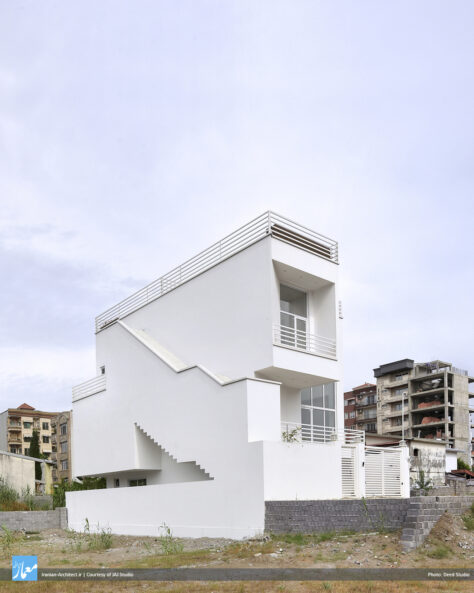
تغییر ارتفاع فضاها مطابق با عرصهبندی و کاربری آنها، یکی از ویژگیهای مهم ویلاست که منجر به شکلگیری فضاها در ارتفاعها و حجمهای متفاوت شده است. فضاهای نشیمن، غذاخوری و خواب مستقل از هم طراحی شدهاند تا از دیدهای متنوع بهره برند و حریم فضاهای خصوصی و عمومی تامین شود. بدینترتیب، هر فضا علاوه بر اینکه حجم و حریم مستقل خود را داراست، با سایر فضاهای ویلا نیز در تعامل است. همچنین تراسها با حجمهای متنوع در سطوح مختلف، دید ویژهای را برای هر فضا ایجاد کردهاند.
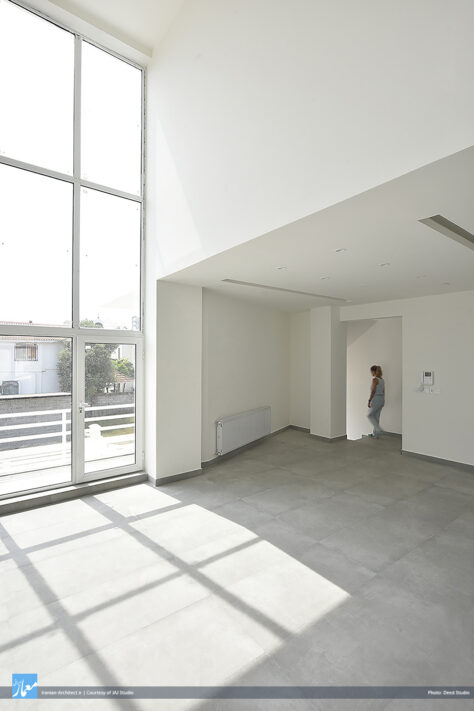
فضای نشیمن با ارتفاعی معادل دو برابر ارتفاع فضاهای دیگر و داشتن یک پنجره بلند، فضایی جذاب و دعوتکننده برای گردهمآمدن اعضای خانواده است که امکان بهرهگیری از کوران و نور طبیعی، و نیز ارتباط بصری میان فضاهای عمومی در طبقات را فراهم میکند.
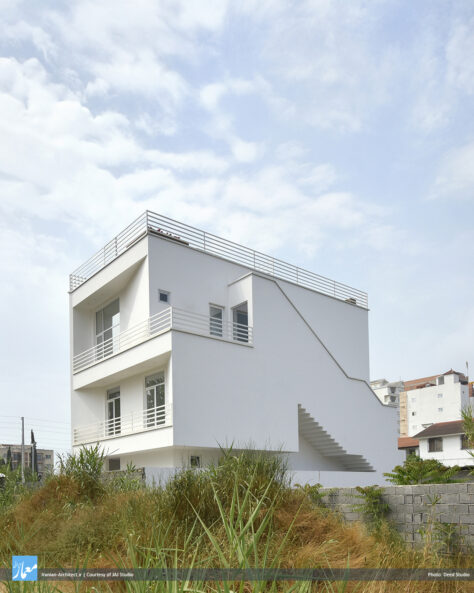
یکی از مهمترین فضاهای پروژه، پلکان آن است که هم ارتباط عمودی میان فضاهای داخلی را برقرار میکند، و هم در حجم بیرونی، ارتباط درون و بیرون را ممکن میسازد و فرم تندیسگون آن نیز موجب ایجاد جذابیت بصری و سایهاندازی میشود. همچنین به دلیل پیشبینی تراکم بالای منطقه و کمبود فضای سبز در آینده، بام سبز با ترکیب سطوحی در لایههای مختلف، مانند یک حیاط خصوصی طراحی شده است.
Sols Villa
JAJ Studio (Ghasem Navaei)
Location: Sorkhrud, Mahmudabad, Mazandaran, Iran
Date: 2020
Area: 280 sqm
Status: Completed
Client: Omid Tavakoli
Design Team: Mohammad Shalikar, Hadis Pourebrahim, Atefeh Pashaei
Structure: Seyed Mohieddin Tayebi
Construction: Mohammadreza Moghadas Niaki
Photo: Deed Studio
The primary challenges in the project were the site’s proximity to the sea, high groundwater levels, narrow width, and the client’s request for maximum space utilization. The building mass is separated from the ground, and divided into constituent elements in the project. Due to the low external surface, the spaces are drawn away from the mass, resulting in a combination of more surface on the outside, and more open plan on the inside, allowing for greater flexibility in response to climatic needs and design opportunities.
The villa’s primary living, eating, and sleeping areas are separated to take advantage of varying views and public vs. private spaces. As a result, the villa’s architecture extends into spaces of varying heights and masses. The double-height and light-filled living room is an inviting space for family gatherings. The terrace is created by varying the mass, at various levels, creating a unique view for each space.
The stair is playing central role in the project, because it connects interior spaces plus the exterior to the interior of the volume. It is located on the northern side of the building as a sculpture through a state-of-the-art design, and as a significant element of the project, defined by its unique characteristics. The green roof comprises several surfaces at various levels, creating a private courtyard that offers captivating views of the surrounding areas.
The villa is in dialogue with its audience and context, and each space has an identifiable personality. It is the most straightforward representation of an architectural structure and its constituent elements.

